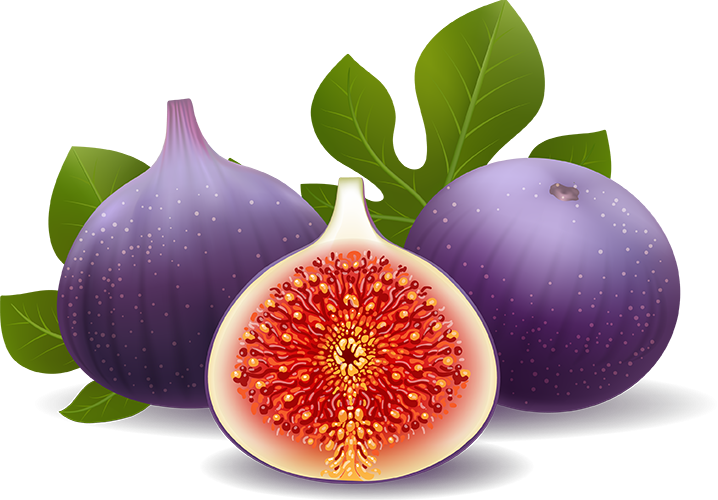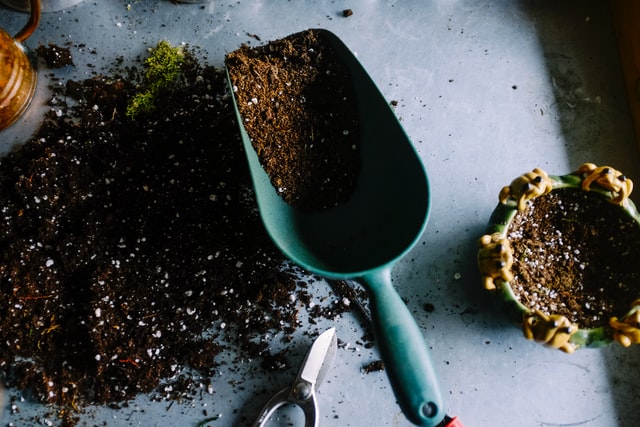Fertilizing fig trees can help to promote healthy growth and improve fruit production. Here are some general guidelines for fertilizing fig trees. By following these tips, you can help to ensure that your fig tree gets the nutrients it needs to thrive.
NPK
Before diving into fertilizers and all the various options, it is important to understand the basics: NPK
NPK stands for the three essential macronutrients that plants need to grow and thrive:
- Nitrogen (N)
- Phosphorous (P)
- Potassium (K)
The ratio of these nutrients in a fertilizer is indicated by the three numbers on the package, with the percentage of each nutrient listed in that order. For example, a fertilizer with an NPK ratio of 10-5-5 contains 10% nitrogen, 5% phosphorous, and 5% potassium.
Nitrogen is an essential nutrient that is important for vegetative growth, including the development of leaves and stems. It is often the most limiting nutrient for plant growth, as it is readily lost from the soil through leaching and other processes.
Phosphorous is another essential nutrient that is important for a range of plant processes, including root growth, flower development, and the production of fruit. It is typically less available to plants in soil than nitrogen and potassium, and is often added to fertilizers in the form of phosphoric acid or rock phosphate.
Potassium is an important nutrient that helps to regulate the water balance in plants, as well as playing a role in the synthesis of proteins and the activation of enzymes. It is often found in high concentrations in the tissues of plants and is important for overall plant health.
The NPK ratio of a fertilizer can vary depending on the specific needs of the plants being grown. For example, a fertilizer with a high nitrogen content may be more suitable for promoting vegetative growth, while a fertilizer with a higher phosphorous content may be more suitable for promoting flowering and fruiting. It is important to choose the right fertilizer for the specific needs of the plants being grown and to follow the instructions on the label for proper application.
Organic Fertilizers
At CanadianFigs we always try to use organic fertilizers when possible. Organic fertilizers are a good choice for gardeners who want to avoid using synthetic chemicals and who want to promote sustainable and environmentally friendly practices.
Organic fertilizers are plant or animal-based products that are used to provide nutrients to soil and plants. They are made from natural materials and are considered to be environmentally friendly because they do not contain synthetic chemicals. Some examples of organic fertilizers include:
- Compost: Compost is made from decomposed organic matter, such as leaves, grass clippings, and kitchen waste. It is a rich source of nutrients for plants and helps to improve soil structure.
- Manure: Manure is produced by animals and is a good source of nutrients for plants. It is high in nitrogen, phosphorus, and potassium, which are essential for plant growth.
Organic fertilizers differ from synthetic fertilizers in that they release nutrients slowly over time, rather than all at once. This can be beneficial because it helps to avoid over-fertilization, which can lead to nutrient imbalances in the soil and damage to plants.
In addition to providing nutrients, organic fertilizers can also improve the structure and water-holding capacity of soil, helping to create a healthy growing environment for plants & trees.
Chemical Fertilizers
In addition to Organic fertilizers, you can use chemical fertilizers. They are readily available and easy to apply. Just make sure you follow the instructions.
Chemical fertilizers are synthetic substances that are used to provide nutrients to plants. They are made from a variety of raw materials, including minerals, gases, and other inorganic substances, and are formulated to supply specific nutrients that plants need to grow.
Chemical fertilizers are typically used to supplement the nutrients that are naturally present in soil, or to correct imbalances that may be present. They are often used in commercial horticulture, where they can be applied in precise amounts to ensure that plants receive the nutrients they need.
One advantage of chemical fertilizers is that they can be precisely formulated to supply specific nutrients, making it easier to target specific deficiencies. However, they can also be harmful if not used correctly, as they can cause nutrient imbalances in the soil and can have negative impacts on the environment if they are not properly managed.
It is important to follow the instructions on the label when using chemical fertilizers to avoid over-fertilization.
Applying Fertilizer
Follow the label instructions: When applying fertilizer to your fig tree, be sure to follow the label instructions carefully.
Over fertilizing can harm the tree, so it’s important to use the correct amount.
Always fertilize according to the tree’s needs: Different fig trees have different fertilization needs, depending on factors such as the tree’s age, size, and soil type. Be sure to pay attention to your tree’s specific needs and adjust your fertilization accordingly.
If your fig tree is young or newly planted, it’s usually not necessary to fertilize it very often. The tree will get all the nutrients it needs from the soil. Organic and slow release fertilizers should be used every time fig trees are up potted.
Use a slow-release fertilizer: Slow-release fertilizers are a good option for fig trees because they release nutrients slowly over a period of time, rather than all at once. This can help to prevent overfertilization and minimize the risk of burning the roots.
Apply the fertilizer to the soil by spreading the fertilizer evenly around the base of the fig tree, being careful not to get it on the foliage or trunk.
Never fertilize a dry soil fig tree (or any other plant) with soluble fertilizer. If the soil is very dry, by fertilizing you will risk “burning” or over fertilizing the fig tree. The soil will get too saturated with fertilizer and the fig tree will absorb too much at once. Water the tree before fertilizing and allow the tree to use satisfy its thirst first. Fig trees are very thirsty during the summer periods especially when grown in containers and will consume large amounts of water from the soil in very short periods of time.
Timing & Fertilizing
Since different fig trees have different fertilization needs, let’s try to simplify this based on the age of the fig trees and our location.
First Season – CanadianFigs “Baby” Fig trees
All our CanadianFigs “Baby” fig trees available and picked up from us, come with soil enriched with our special balanced ingredients of organic and slow release fertilizer that will provide sufficient nutrients until transplanting to a larger size container.
When transplanting to a larger container, we recommend using and adding organic fertilizers such as composted manure (sheep, cow, chicken, etc) in the soil when transplanting. Slow release fertilizers could also be used at this time. Nutrients will be released and available to your fig tree at every watering throughout the season.
Soluble fertilizers could also be used. Just ensure you do not overfeed and over fertilize at once.
First year fig trees will usually follow a different feeding and longer schedule than the mature fig trees. Focus is mostly on root system and growth throughout the season without focusing on fruit production.
During the first year a more balanced fertilizer is recommended (NPK 10-10-10, 20-20-20, and even 24-8-16)
Fertilizing is usually stopped a few months before the end of the season and first frost date in order to slow down growth and allow for lignification before winter.
Second Season & beyond – Mature & Dormant Fig trees
Second season fig trees or mature fig trees coming out of dormancy from winter storage will usually follow a more intense nutritional and feeding period during the early spring.
Due to our Canadian climate and shorter summers, the fig tree will need to come out of dormancy and grow at a very fast rate in order to produce and ripen the fruits before season ends.
The best time to fertilize a mature fig tree is in the early spring, right before the tree starts to produce new growth.
In early spring, fig trees prefer a balanced fertilizer with equal amounts of nitrogen, phosphorus, and potassium (NPK). Look for a fertilizer with an NPK ratio of 10-10-10 or 20-20-20.
Next should follow a fertilizer with a higher Nitrogen (N) such as 24-8-16 to encourage the green growth and foliage.
A fertilizer with a higher Phosphorus (P) concentration could be used when approaching the fruiting season. This would encourage the fruit production.
Recommended to stop all fertilizing shortly after the fruits (“figlets”) start to form.
Avoid fertilizing in the fall: It’s generally not a good idea to fertilize fig trees in the fall, as this can encourage new growth that may not have time to harden off and become lignified before winter.

